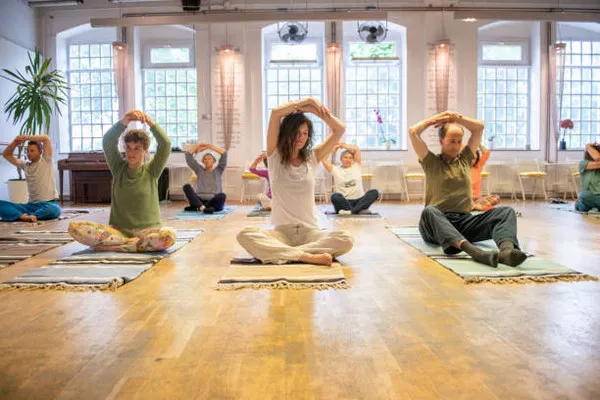A recent study from Stanford Medicine and the University of California, San Francisco, sheds light on the benefits of low-impact exercises, including yoga, for older women suffering from urinary incontinence. This research highlights the potential of accessible, low-risk interventions for managing this prevalent age-related condition.
Study Overview
The study, spanning 12 weeks, divided participants into two groups: one engaged in a low-impact yoga program, while the other participated in a physical conditioning control group. The findings revealed notable improvements in both groups:
Women practicing yoga experienced a roughly 65% reduction in urinary incontinence episodes.
The control group, which focused on general stretching and strengthening exercises, achieved comparable reductions.
These results suggest that both forms of exercise offer benefits similar to those provided by incontinence medications.
Yoga Program Details
The yoga regimen included 16 specific hatha yoga poses designed to enhance pelvic floor strength. Participants attended two 90-minute sessions per week and were encouraged to practice independently for an additional hour weekly.
Control Group Comparison
The control group’s sessions were of similar duration but concentrated on nonspecific stretching and strengthening without targeting the pelvic floor. Both groups maintained practice logs to monitor their activities and progress.
Impact of Exercise on Incontinence
Initially, participants reported an average of 3.4 urinary incontinence episodes daily, with 1.9 classified as urgency incontinence and 1.4 as stress incontinence. By the study’s conclusion, the yoga group’s daily episodes decreased by 2.3, while the control group saw a reduction of 1.9 episodes. Both interventions led to a reduction in episodes by approximately 60%.
Broader Implications
This study highlights the efficacy of exercise, particularly yoga, as a viable and low-risk treatment for urinary incontinence. Given the high prevalence of this condition among middle-aged and elderly women—affecting over 50% of those in midlife and up to 80% of women over 80—finding effective management strategies is crucial for preserving quality of life and preventing associated complications like social isolation and falls.
Additional Insights
For older women struggling with urinary incontinence, incorporating low-impact yoga and exercise into their routine presents a promising and accessible alternative to medication. Exploring local or online Iyengar yoga classes and similar low-impact options could offer valuable benefits.
This research underscores the importance of integrating exercise into treatment plans for urinary incontinence, providing an additional, non-pharmaceutical option for those seeking to improve their health and well-being.


